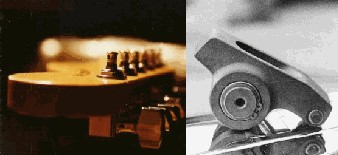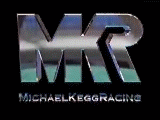



Reliability and durability are a factor because with a manual transmission, there is severe shock loading as the clutch is released to the engine, transmission, differential, and all drive train components. The torque converter cushions a lot of the impact. As delivered automatic transmissions cannot be used. Automatic transmissions are the closest things to the human brain and actually look like one in the valve body area. They are an electro, hydraulic, mechanical device which thinks and decides what gear you should be in and when you should be in it. The oil pump is the heart, oil the blood, clutches the muscle, hard parts the bones to get the job done. The valve body is the mind of the transmission which makes it’s decisions based on throttle position, engine speed, vacuum, output shaft speed and many factors. If your completely clueless B&M Racing Transmissions can sell you a High Stall Converter and a complete Racing Automatic Transmission. If you have some experience, and would like a challenge, they sell overhaul kits and or reprogramming kits so you can build one yourself. The first part is to select the strongest automatic transmission for your brand, engine combination. For Chevrolet many transmissions have corrugated sheet metal welded parts, others are machined from solid steel billet. The Turbo Hydro 350 and 400 are examples of the machined from solid steel billet, clutch carrying components As automatic transmissions are delivered from the factory they shift at low R.P.M. and down shift at low R.P.M. as well. What good is an 8500 R.P.M. Small Block if your automatic transmission shifts at 4000 R.P.M. Where a stock engine is finished, a racing engine starts huffing and puffing like a horny rhino chasing a female in heat, it’s just waking up at 4000 R.P.M.. Reprogramming the automatic transmission valve body causes a shift to occur extremely quickly by eliminating the accumulator, and allows for shifting at high R.P.M. and full manual control, so it shifts when you want it to.
I often joke that the Turbo Hydro 350 is for engines with less than 350 horsepower, the Turbo Hydro 400 is good for more than 400 horsepower and a manual transmission is good for what is in between. Why? Well I’ll tell you a true story, full of a little sadness, and glory. I built this 8500 R.P.M. small block Chevy and I was with this
cute blond girl friend who loved fast cars and I stood on the throttle and shifted to second gear at 8000 R.P.M. and BANGGGGGGGGGGG, thunk, thunk, thunk. It sounded like a gun went off in the car, and some one was banging on the transmission tunnel with a sledge hammer. So I pull over and my transmission, a TH 350 with a 4000 stall converter was bleeding, so I get back in the car, and tell my girlfriend I have to take her home. The Turbo Hydro 350 fortunately was stuck in second gear. Miraculously I drove my girlfriend home, and then drove myself home, whereupon pulling up in the driveway it was all over. I actually drove all the way home, I could not believe it. It was a freak miracle because the transmission case had actually broken in half !!! The fact that I had steel motor and transmission mounts, and a steel deep sump transmission oil pan, kept it all together until it bled to death. The glory was the engine made enough horsepower to break the transmission in half, the sadness was I had to take my girlfriend home. Moral of the story: Use the strongest automatic transmission you can, in my case, pardon the pun, a Turbo Hydro 400.
Rear ends are the same situation. You want the strongest setup you can get for your brand, chassis combination. Generally the largest wheel used is about ten inches wide. On a Chevrolet your going to want a twelve bolt differential. That is literally a rear end with an inspection cover using 12 bolts to affix it to the case. These differentials are plenty strong and generally safe to use especially with an automatic transmission. With a ten inch wide wheel this is a good combination. There are different gear carriers for different ratios. I suggest you use a four series carrier. This means you will be able to run a 4.10, 4.56, or a 4.88 gear ratio gear set. This is what you will want for an engine running 8500 R.P.M. or less. If you are going to run a full size racing tire such as a Drag Slick on a 14 inch wide wheel with a narrowed rear end, I suggest that you run a 9 inch Ford or a Pontiac style differential. The reasoning I am using is regarding safety. Using a 14 inch wide Drag Slick offers a lot more traction than a 10 inch wide street tire. With enough horsepower applied it is possible to break an axle. Should an axle break on a Chevrolet style differential you will lose the wheel. This is because the axle roller bearings use the axle surface as the inner race of the bearing. The outer race of the bearing is pressed into the axle case. When the axle breaks there is nothing to retain the wheel. On a Pontiac differential for example, the axle bearing has an inner and outer race unto itself. The bearing is pressed onto the axle, using a hydraulic press, then the assembly slides into the axle case. If the axle breaks, with this engineering design, the wheel is generally retained, due to the interference fit, of the axle bearing being pressed on the axle, and an axle bearing cover, bolted to the axle case, retaining the bearing. There are shops that can modify you Chevrolet 12 bolt to be like this as well. Bring plenty of money. Once you run a 14 inch wide wheel and narrowed differential you need the custom length axles and all parts to be the best there is. On a street tire you might have a two inch long by ten inch wide contact patch between your tire and the pavement. On a full size drag slick it may be 14 inches long by 14 inches wide approximately just so you get the idea. 2 X 10 = 20 inches square. 14 X 14 = 196 inches square. That is almost ten times as much traction. Top Fuel Hemi on Nitro methane has 7000 horsepower, about ten times as much, so it all works out. By the way, if you do go the narrowed rear end route, with 14 inch wide wheels, you might as well go for that 5000 stall converter. This is what the Pro Street look is all about. They make Department Of Transportation street legal tires for 14 inch wide wheels to outfit you Pro Stock look alike. Just be prepared for peoples eyes to pop fully open when you go grocery shopping with your wheelie bars and your parachutes. George Wellian Future Shock to some, freedom of expression to U.S.
Maximizing your enjoyment.
Be sure and get things right the first time. Although this falls under preparation, it is also required during operation that you get it right. Just as you prepared to build the engine meticulously, you must be prepared to identify the end of the useful lifespan of your engine to save it so it can be rebuilt. You cannot click on undo. There is no undo. Undo in racing engines is not a good thing. Undo is when your engine undoes itself by exploding and scattering parts all over the place. Undo is expensive, preparation is frugal. Exact is a word you must embrace completely to redefine what others might accept as truth into what engine builders know must be absolute. Your not
insane to double and triple check things, your smarter. Know that even if you do everything right your engine could still grenade, don’t cry, move on, build another… Eventually your engine, no matter how great a builder you are, will grenade and I am not joking. Not because you did anything wrong. You are in denial if you do not believe this. That would be like denying your dog or cat will eventually die. Twice as much horsepower is twice as much fatigue your engine parts are subjected to. Twice as much R.P.M. is more than twice as much wear. It is relatively exponential the damage that high R.P.M. does An N.H.R.A. Pro Stock drag racing engine is fortunate to stay together for a four day event. How many miles is that? That is why I recommended following factory maximum R.P.M. ratings.
Determining the end of life can be three fold. 1. Noise. If your engine is making a bad noise it is ready to come apart, whether you take it apart or it or not. 2. Oil consumption. Your valve seals and or guides and or your piston rings are history. 3. Cylinder pressure. This is how the Professionals do it. When your engine is new test each cylinder and record the cylinder pressure. When it is more than 10 % lower it is now a B engine. When it is more than 20 % lower it is now a C engine. When it is more than 30 % lower it is now a D engine. How bad or how much less horsepower are you willing to drive this thing with. D is for …, you fill in the blank. Well you get the idea. Cylinder pressure is where the horsepower is coming from.

